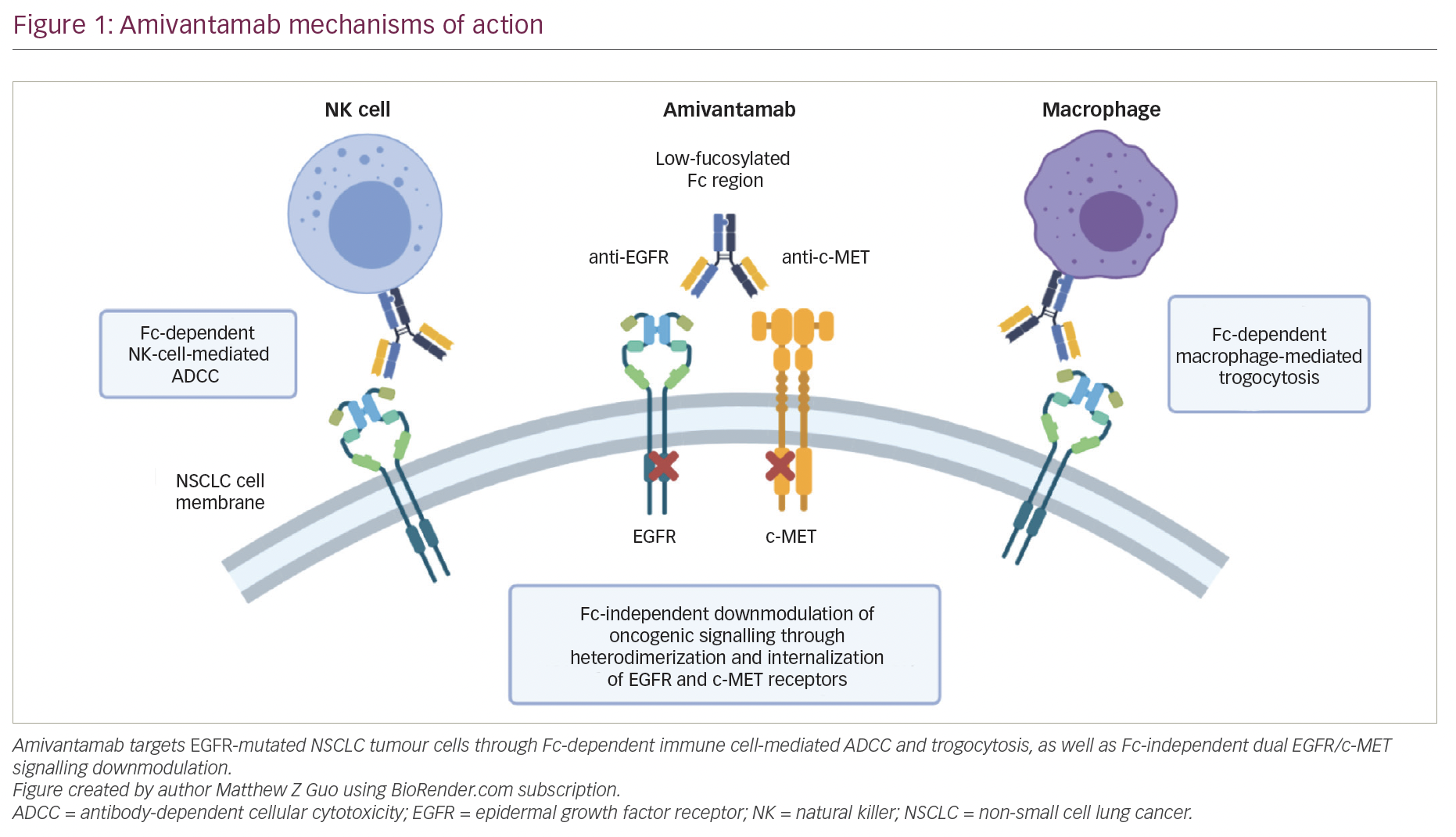Lung cancer has been the world’s most frequent cancer, as well as the world’s leading cause of cancer-related deaths, for several decades.1 It remains today the leading cancer in males2 and, even if incidence rates are generally lower, it represents among females the fourth most frequent cancer and the second most common cause of death from cancer.1 Furthermore, the distribution of histological subtypes has considerably changed over the recent decades, with an increasing frequency of adenocarcinoma compared with squamous cell carcinoma.3 In the European Union, in 2008, lung cancer represented an incidence of 391,000, making it the third most frequent cancer after colorectal and breast cancer.4 However, with an estimated 342,000 related deaths in 2008, it is the number one killer cancer.4 Although the mortality rate in men has been decreasing for more than 20 years, the mortality rate in women has been increasing in many European countries2 and rose from 12.6/100,000 in 2007 to 13.1/100,000 in 2011.5 As a consequence, it tends to approach and sometimes exceed the mortality rate of breast cancer, as was the case in the UK and Poland, where lung cancer was the leading cause of cancer-related deaths in women from 2007 to 2008. The lung cancer epidemic in women is still expanding.6 Predictions for the year 2012 show a 7 % increase of lung cancer in European females.5
Treatments for Patients with Lung Cancer and Their Side Effects
Clinical management and prognosis of lung cancer depend on the histological type of cancer, its stage and the general state of health of the patient. Non-small-cell lung cancer (NSCLC, 75–80 % of lung cancers) is primarily treated with surgery, while limited small-cell lung cancer (SCLC, 20–25 % of lung cancers) is usually treated with chemotherapy and radiotherapy.
The extent of surgery depends on the size and location of the tumour. The death rate following surgery is about 4.4 %, depending in particular on the condition of the patient’s lungs.7 The overall five-year survival rate for these patients varies, depending on the stage of the disease, from 61 % (stage IA) to 1 % (stage IV).8,9 In most cases of open lobectomy, numerous post-operative complications are noted, such as prolonged chest-tube placement, atrial arrhythmias and lobar atelectasis, as well as infections. Patients’ physical and social quality of life also deteriorates and pain can persist. Some patients do not completely recover, even at 24 months after surgery.10,11
Although surgery is the standard treatment for early primary lung cancer, it is not feasible for many patients. In that case, if the tumour remains located in the thorax, conventional radiotherapy (≈30 fractions/session) is indicated, but the total dose delivered remains limited because of the risk of complications (radiation-induced pneumonia, poor pulmonary tolerance in the case of peripheral tumours, poor mediastinal tolerance in the case of central tumours), especially in patients with an impaired respiratory capacity. Furthermore, radiotherapy can cause a number of side effects that appear gradually over the sessions, which are generally spread out over five to eight weeks, including unusual fatigue, painful swallowing, a dry cough and skin reactions. It can be combined with chemotherapy.
When the tumour has invaded other organs and gives rise to metastases, treatment is based primarily on chemotherapy, and sometimes on symptomatic radiotherapy. Patients under chemotherapy may experience side effects such as reduced resistance to infections, loss of appetite, altered taste, nausea and vomiting, stomatitis and alopecia. All these side effects decrease or cease upon discontinuation of treatment.
The CyberKnife® System – Technical Features
Increasing the delivered dose of radiation results in improved local control and survival. Stereotactic body radiation therapy (SBRT) can deliver higher doses than those delivered by conventional radiotherapy.12
4D SBRT using the CyberKnife® system (see Figure 1) is indicated in the treatment of lung tumours, whether they are primary and early-stage, recurrent or secondary. Synchronised to breathing and minimally invasive, it is particularly well-suited for delivering high doses in a limited number of fractions using many different angles that converge on the target, while providing optimal preservation of the surrounding organs.13
As a result of their anatomical location, lung cancer tumours move with respiration. The intra-fraction radiation beam position is synchronised with the tumour movement thanks to the Synchrony® system. Synchrony is a 4D respiratory tracking system that predicts target location based on the correlation of realtime respiratory breathing pattern captured by external markers and target position assessed by internal markers (fiducials, or target anatomy), unlike other image-guided radiation techniques. With the Synchrony respiratory tracking system, internal fiducial markers are detected during treatment in orthogonal X-rays and external electroluminescent diodes are detected in real time (32 images/second) by three cameras. A model correlating the movements of the implanted internal markers and those of the external markers is acquired. This model correlates internal and external markers throughout treatment and compares estimated movement with the real positions of markers. Any deviation in positioning exceeding a set value triggers system discontinuation.14,15 The Synchrony tracking precision, while allowing patients to breathe freely, enables clinicians to create dose distributions that encompass the clinical target volume with minimal additional margins to account for positional uncertainty, compared with radiation technologies that do not continuously track and correct for respiratory motion.16–18 It only requires a 5–6 mm clinical target volume to derive the planning target volume. Implantation by an intravascular approach or transthoracic computed tomography guidance of fiducials in or close to lung tumours is well tolerated, making it possible to deliver, for example, three times 20 Gy to a volume, consisting in the gross tumour volume and a 5 mm safety margin.19
Furthermore, the Xsight® Lung Tracking system can be also used. It tracks lung tumours movements directly, without fiducials, with accuracy, reliability and self-adjusting repeatability, especially in the case of early-stage peripheral lung cancer (size ≥15 mm and of sufficient density compared with the adjacent pulmonary parenchyma).20–22
The CyberKnife System and Early-stage Lung Cancer
Despite a diagnosis of stage I NSCLC and new surgical techniques, patients are not always operable, typically because of respiratory or cardiovascular co-morbidities. Others may refuse surgery. 4D SBRT with the CyberKnife system and Synchrony tracking technology can be proposed as an alternative in these cases, and allows an increase in dose to the tumour (15–67.5 Gy in 1–5 fractions over five to eight days) without causing peripheral complications in fragile patients, with good tolerance (fatigue usually being the main side effect), a low complication rate and a higher tumour control rate (76 % to 100 % at 1 to 4.5 years), comparable to progression-free rates obtained with lobectomy but without the associated morbidities.20,23–26 A clinical study conducted on 70 inoperable patients with peripheral stage I tumours showed tumour control rates at two years of 96 % with three fractions of 20 Gy and overall survival rates at one year and two years of 83 % and 62 %, respectively.27 Even for elderly patients with stage I NSCLC, SBRT with the CyberKnife system offers good treatment with an excellent tumour control rate.28 It has also been shown to preserve patients’ quality of life, even enhancing emotional functioning.29
The CyberKnife System and Central Lung Cancer
Given the intensity of the dosing schedules usually employed and the proximity of critical organs, conventional SBRT is precarious for the treatment of central lung cancer, which implies primary and metastatic malignant tumours in the central chest, where organs such as the heart, oesophagus, trachea and mainstem bronchus lie. Nevertheless, studies show the feasibility of 4D SBRT with the CyberKnife system in their treatment.23,30 In the most recent one, 56 patients with early-stage NSCLC or solitary metastases were either inoperable, ineligible or refused surgery or chemotherapy.30 Tumours located near the oesophagus were treated with six fractions of 8 Gy. Other tumours were treated with five fractions of 9 Gy, then five fractions of 10 Gy and finally five fractions of 12 Gy. The results (see Figure 2) showed minimal toxicity rates (no acute or late grade 4 or 5 toxicity), ranging among the lowest toxicity rates published for SBRT delivered to central tumours. Local tumour control was 91 % at one year and 76 % at two years. Three-year cancer-specific survival was 80 % for patients with early stage l NSCLC and 58 % for patients with metastases. Two-year tumour control and overall survival were comparable to those generally reported for SBRT treatment of peripheral NSCLC lesions, without putting patients at risk of complications or serious toxicities.
The CyberKnife System and Lung Cancer Re-irradiation
Despite the progress in local and combined systemic treatments, local failure remains an issue in the treatment of lung cancer. 4D SBRT with the CyberKnife system provides options for previously irradiated patients with recurrence. Patients can be re-irradiated with the CyberKnife system, which can deliver doses to the recurrence alone. The results of a retrospective study showed the effects of re-irradiation in patients with primary or secondary lung tumours previously treated by irradiation alone or by radiochemotherapy (see Figure 3).31 For the 20 included patients, the relapse was localised in the same lobe (89 %) or in the same lung (11 %). After re-irradiation (median dose 60 Gy, three to six sessions), no cases of acute grade 3 toxicity were found. The local response rate was 36 %, with 47 % stabilisation and a median survival rate without progression of eight months.
Conclusion
Several studies show that delivering precisely targeted ablative radiation doses to limited treatment volumes in a hypofractionated fashion constitutes an effective and safe therapeutic option for patients with lung tumours. 4-D SBRT with the CyberKnife system thus provide a major therapeutic advance in the management of lung lesions. While minimising exposure to the surrounding normal tissue or adjacent vital structure, it achieves high levels of local disease control with limited toxicity. In many cases, it might be curative or at least beneficial for patients in whom surgery is not an option. Its practical advantages include a short treatment course as well as preservation of physical and emotional quality of life during and after treatment.







